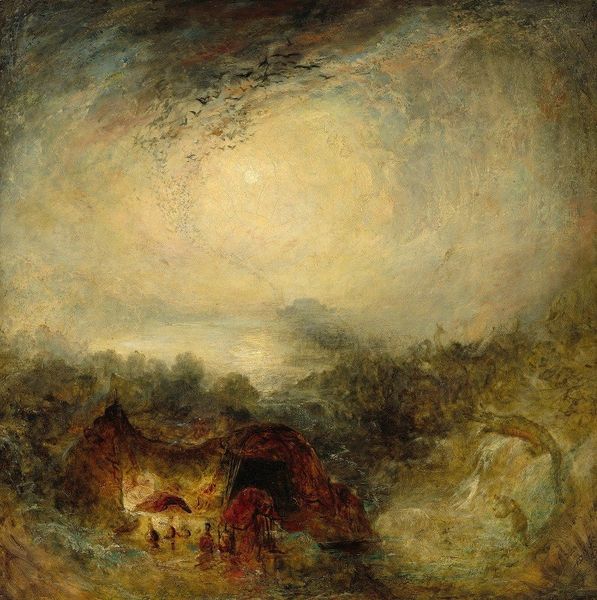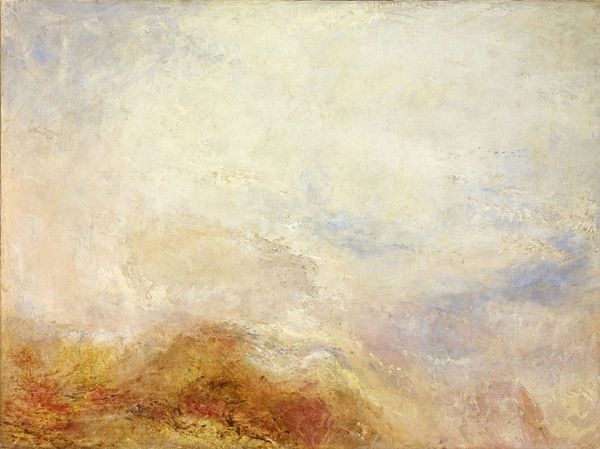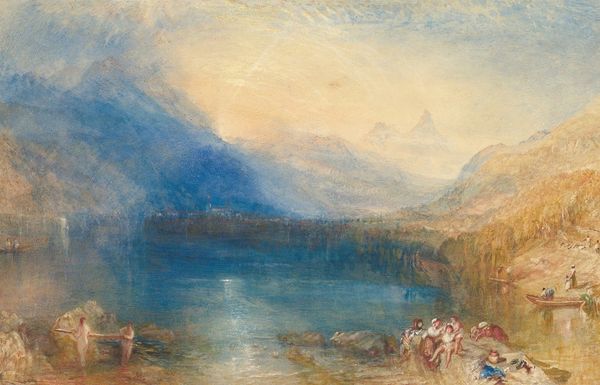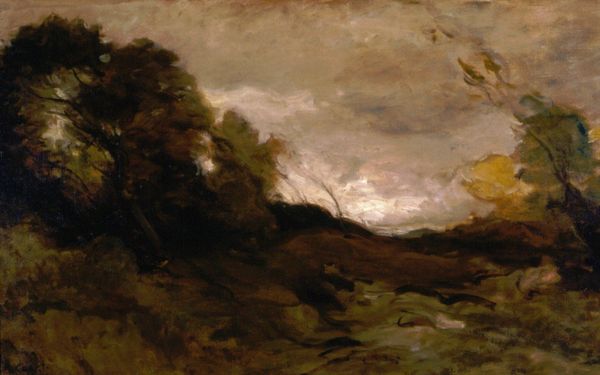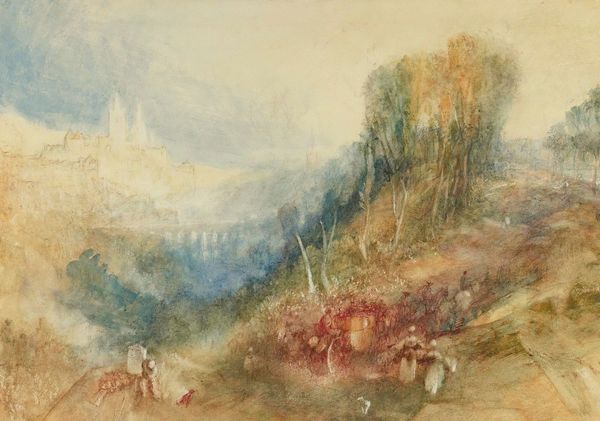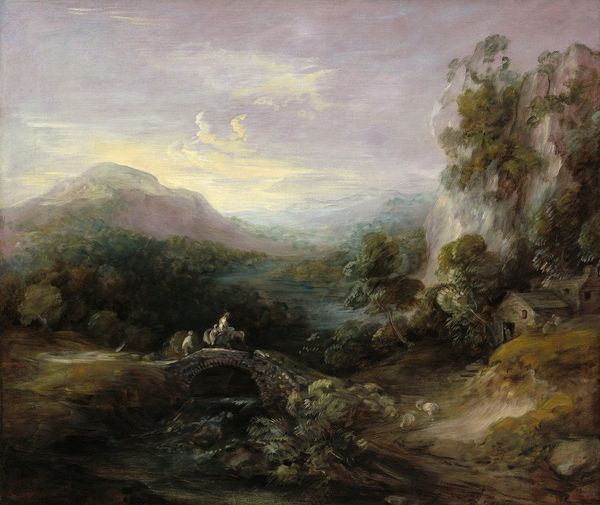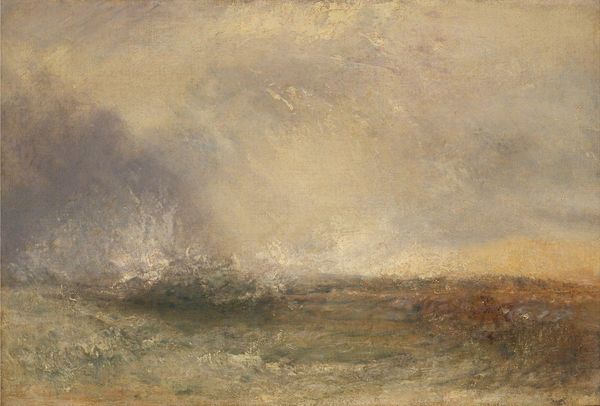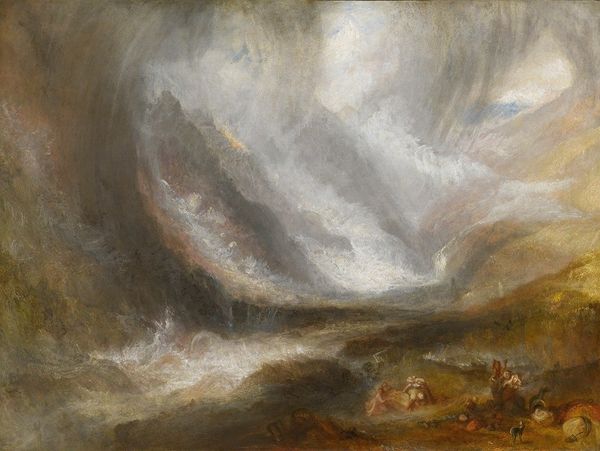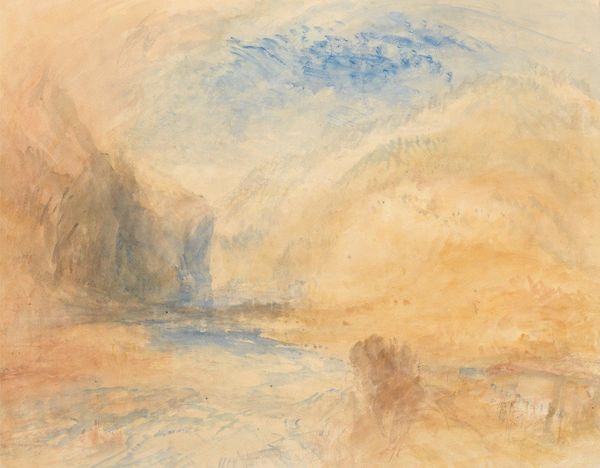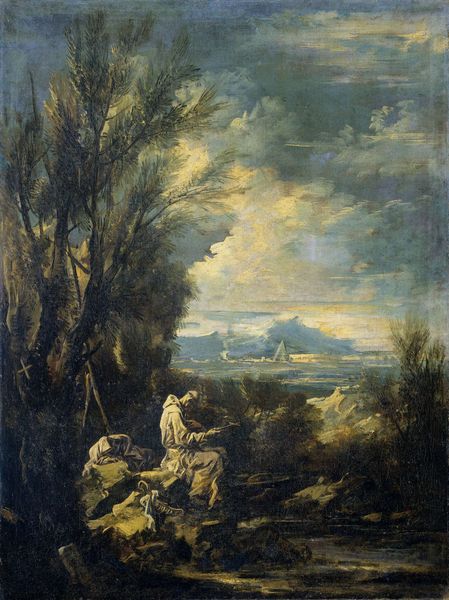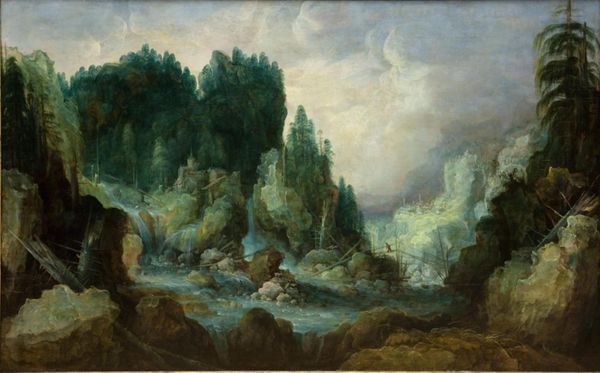
watercolor
#
landscape
#
figuration
#
watercolor
#
romanticism
#
mythology
#
history-painting
#
watercolor
Copyright: Public Domain: Artvee
J.M.W. Turner, created *Glaucus and Scylla*, a painting which captures a scene from Ovid's *Metamorphoses*, a text that was popular during the Romantic era in Britain. In this period, there was a growing interest in the power of nature, the sublime, and the emotional intensity, particularly in the face of industrial change. Turner, an Englishman, paints figures within a landscape consumed by the natural world. The painting focuses on the fraught encounter between the sea-god Glaucus and the nymph Scylla. He desires her, but she rejects him, and through the agency of the jealous sorceress Circe, Scylla is turned into a sea monster. The emotional heart of the painting turns on themes of transformation, desire, and the monstrous feminine. Scylla’s rejection of Glaucus and the subsequent transformation carry layered commentary on beauty, power, and the perilous state of being a woman in a world dominated by men. The painting offers both a personal emotional experience and a reflection on the societal issues of Turner's time.
Comments
No comments
Be the first to comment and join the conversation on the ultimate creative platform.
